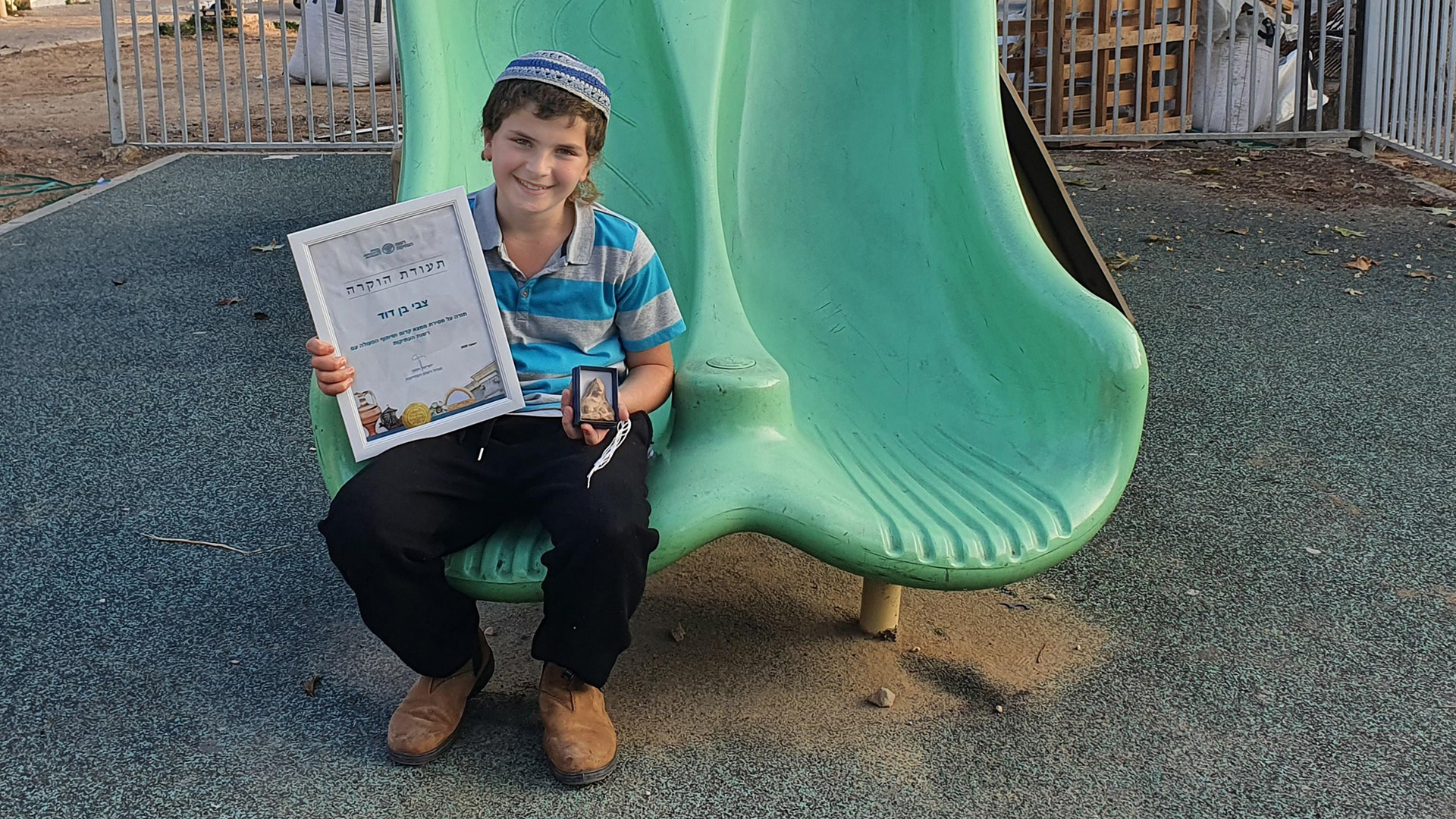11-year-old boy discovers biblical-era amulet during Negev Desert hike
Amulets such as this were common in Israel during the time of the First Temple.

An 11-year-old boy went for a desert hike with his parents and discovered a child-protecting figurine dating to the biblical era, about 2,500 years ago.
Zvi Ben-David and his family were hiking near Nahal HaBesor, a river that runs through the Negev Desert in southern Israel, when he spotted an object that turned out to be a ceramic statuette of a woman, representatives with the Israel Antiquities Authorities (IAA) wrote on Facebook on March 9.
The small figure had a prominent nose, a scarf covering her head and crossed arms folded under her bare breasts. The statuette, which measured about 3 inches (7 centimeters) tall and (6 cm) wide, was likely cast from a mold, according to the Facebook post. During the fifth and sixth centuries B.C., such figurines were commonly used as good luck amulets, for protecting children or promoting fertility, the IAA says.
Related: The Holy Land: 7 amazing archaeological finds
After Ben-David found the artifact, his mother Miriam Ben-David, a professional tour guide, contacted IAA archaeologist Oren Shmueli and arranged to deliver the figurine to the IAA's National Treasures Department, for research and preservation.
Shmueli and Debora Ben-Ami, curator of the Iron Age and Persian periods for the IAA, will further investigate the figurine to better understand how representations of human figures were incorporated into superstitious rituals during biblical times, Shmueli said.
Throughout Israel's past, figurines of bare-breasted women were commonly found in people's homes, "like the hamsa symbol today" — a Middle Eastern amulet shaped like a hand with an open eye in the palm, displayed or worn to ward off bad luck and protect against the evil eye, according to the Facebook post. Thousands of years ago, images of women with uncovered breasts held similar significance, promising "protection, good luck and prosperity," Shmueli said.
Sign up for the Live Science daily newsletter now
Get the world’s most fascinating discoveries delivered straight to your inbox.

Other types of amulets in the ancient world had more uncommon uses, such as hindering attacks from evil blood-drinking spirits. But during antiquity, when medical knowledge and understanding of hygiene was limited, it's no wonder that people frequently turned to amulets as an extra protective boost for continued good health and for help overcoming the dangers and challenges of everyday life.
"In the absence of advanced medicine, amulets provided hope and an important way of appealing for aid," Shmueli said.
Originally published on Live Science.

Mindy Weisberger is an editor at Scholastic and a former Live Science channel editor and senior writer. She has reported on general science, covering climate change, paleontology, biology and space. Mindy studied film at Columbia University; prior to Live Science she produced, wrote and directed media for the American Museum of Natural History in New York City. Her videos about dinosaurs, astrophysics, biodiversity and evolution appear in museums and science centers worldwide, earning awards such as the CINE Golden Eagle and the Communicator Award of Excellence. Her writing has also appeared in Scientific American, The Washington Post and How It Works Magazine. Her book "Rise of the Zombie Bugs: The Surprising Science of Parasitic Mind Control" will be published in spring 2025 by Johns Hopkins University Press.









